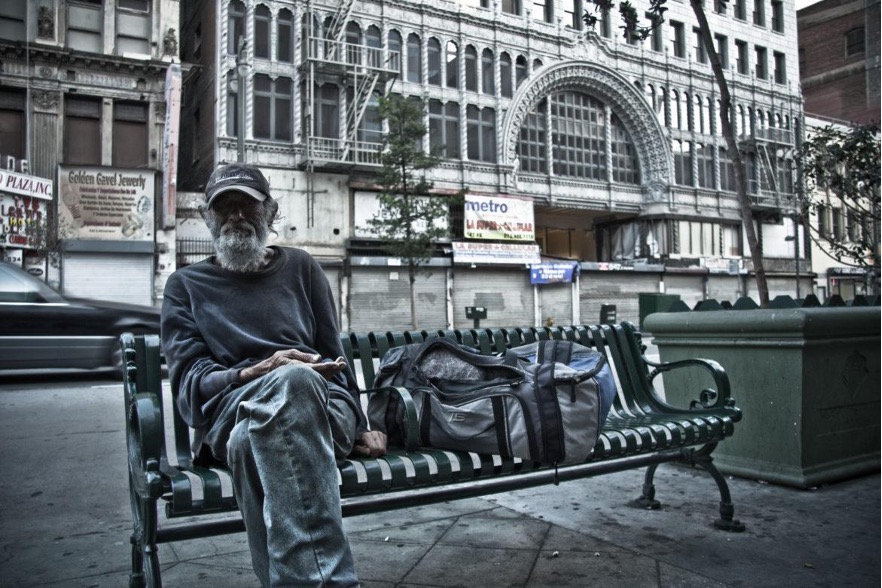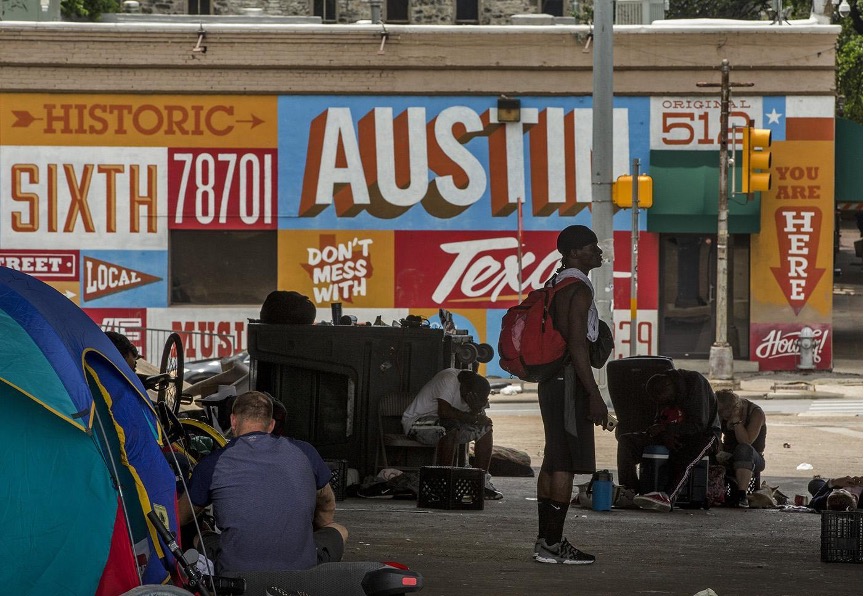
By Ximena Gonzalez, Alliance for Sustainability Intern, The University of Texas at Austin ‘23
Around 60,000 Americans died due to air pollution in 2019 but some estimates reach 100,000 to 200,000 deaths per year. Globally, the WHO says 4.2 million people die every year due to outdoor air pollution. At the same time, almost no attention is given to the huge impact of air pollution on those individuals experiencing homelessness (IEHs) in the US. It’s a major challenge, but we can do something about it. There are solutions to both homelessness and air pollution.
According to the CDC, “Ground-level ozone (a key component of smog) is associated with many health problems, such as diminished lung function, increased hospital admissions and emergency room visits for asthma, and increases in premature deaths.” And, they point out that “Health-related costs of the current effects of ozone air pollution exceeding national standards have been estimated at $6.5 billion nationwide…”
While air pollution affects us all, there should be great concern for IEHs since many spend their days and nights outdoors in unsuitable habitation exposed to air pollution. According to the 2020 Annual Homeless Assessment Report, over half a million Americans experience homelessness, and the 39% who are unsheltered will face the consequences of air pollution.
Unfortunately, IEHs are a marginalized and often neglected group of people. This means very little research has been done into how they are affected by air pollution. However, one of the leading pieces in this field is a 2020 article by four academics at the University of Utah in Salt Lake City who gathered data on IEH’s in Salt Lake City.
They found that 61% of IEH’s had physical reactions to air pollutants, 37% reported emotional stress related to air pollution, and 89% had sought medical attention for a condition related to air pollution. While these numbers are grim and limited to a small population of IEHs, there is a lot of insight to be gained into their experiences with air pollution. Additionally, it will hopefully encourage more research into this field in the coming years.
City Policies

Source: Texas Homeless Network
When issues like these are studied and quantified, policy can be written and enacted to shift the narrative. Currently though, there is not enough research or attention on this issue for policy to be written about it.
In fact, when policy has shifted its attention to IEHs in recent years, it has been in the form of camping bans. Camping bans prohibit sitting, lying down, or camping in public areas in cities. This happened in Denver in 2019, and Austin in early 2021. These are just two examples of the proliferation of camping bans throughout the country which are direct attempts to vanish IEHs from urban public spaces and criminalize homelessness. These are not solutions.
Real Solutions
However, there are so many real solutions we can look towards:
- Increase research on IEHs and air pollution. The more attention that is given to this issue, the more research that will be funded around the country to study the effects of air pollution on IEHs. Research leads to policy making.
- Contact your representatives about camping bans. Is there a camping ban in your city or state? Let your representatives know that these are regressive policies that effectively criminalize homelessness. While allowing IEHs to remain camped in public places is not a solution in the slightest, it allows them easier access to medical and police assistance. Additionally, out of sight means out of mind. Most people will not give IEHs a second thought once they are removed from the public eye.
- Create more affordable housing and homeless shelters around the country. We should provide housing unconditionally to IEHs, and connect them with social services after the fact. Providing shelter with healthy indoor conditions to IEHs lessens their exposure to air pollution and increases their overall safety. Additionally, it appeals to those who want to see IEHs off the streets, and it opens up more outdoor space for public use.
- Decrease air pollution in cities. This helps all city dwellers avoid the effects of air pollution, but especially those who cannot find reprieve indoors. Implementation of this includes increasing walkability and bikeability to decrease vehicle use, switching to electric vehicles and offering incentives for commuting by clean, electric public transit.
- Pressure your state’s policies. The US EPA determines whether every region in the US is an “attainment” or “non-attainment” area in terms of national ambient air quality standards. If they are designated as a non-attainment area, the state must draft a state implementation plan to improve the air quality. You can pressure your state government to take stronger measures.
We must continue to strive for clean air everywhere for everyone. Especially for those who are the most vulnerable to the adverse health effects of air pollution, yet the least politically represented. The right to breathe clean air is universal.
